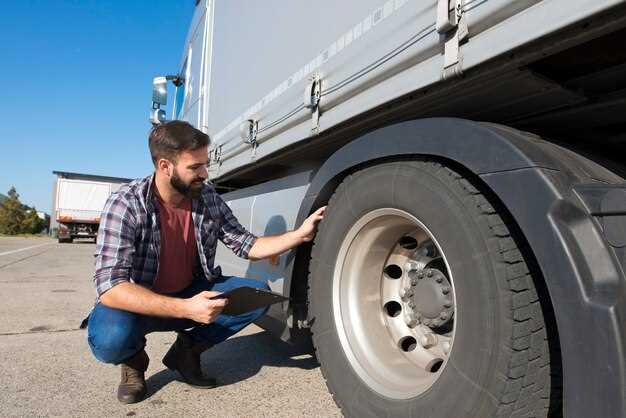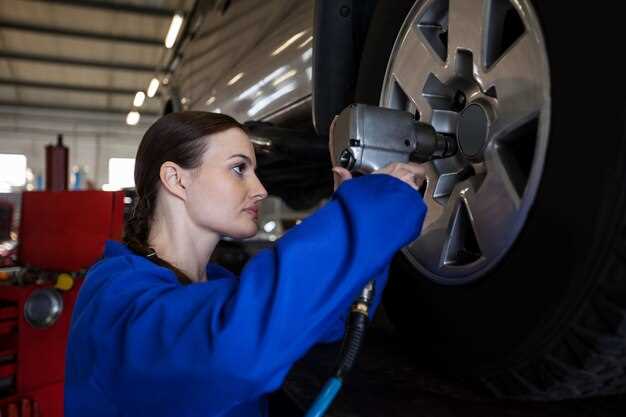
Proper care for your trailer’s tires is crucial for maintaining safety and enhancing performance on the road. One of the most important maintenance practices that often gets overlooked is regular tire rotation. This simple procedure can significantly extend the lifespan of your tires and improve their overall efficiency.
When tire rotation is performed routinely, it helps to ensure even wear across all tires. Different positions on the trailer can experience varying levels of stress and friction, leading to uneven tire wear if not addressed. By regularly rotating your tires, you promote balanced wear rates and optimize the handling and stability of your trailer.
Additionally, investing time in tire rotation not only elevates your trailer’s performance but also enhances safety. Properly maintained tires reduce the risk of blowouts and improve fuel efficiency, which are critical factors for any trailer owner. Understanding the benefits of regular tire rotation empowers you to make informed decisions about your trailer’s maintenance, ultimately saving you time and money in the long run.
How Tire Rotation Enhances Safety and Stability

Regular tire rotation is a crucial aspect of trailer maintenance that significantly impacts safety and stability on the road. By redistributing the wear on each tire, this practice helps ensure that all tires maintain optimal performance and longevity.
- Even Wear Patterns: Tires wear at different rates depending on their position on the trailer and the load distribution. Rotating tires helps achieve uniform wear, which enhances performance and increases the lifespan of each tire.
- Improved Traction: Properly rotated tires provide better grip on various road conditions. This is essential for trailers, as they can become unstable if traction is compromised, especially in wet or slippery environments.
- Enhanced Stability: Balanced tire wear contributes to improved stability during towing. When tires are evenly worn, the trailer is less likely to sway or experience uneven handling, providing a smoother driving experience.
- Increased Safety: Regularly rotated tires reduce the risk of blowouts and other tire-related failures. This proactive care helps prevent accidents, ensuring both the trailer and its load are secure during transit.
In conclusion, prioritizing tire rotation as part of your trailer care routine not only extends the life of your tires but also enhances safety and stability on the road. Investing time in this maintenance task pays off by providing a more reliable and secure towing experience.
Optimal Timeframes for Trailer Tire Rotation Maintenance
Maintaining the longevity and performance of your trailer’s tires is crucial for safe transportation. Regular tire rotation plays a significant role in achieving this goal. The optimal timeframes for trailer tire rotation can vary based on usage, but understanding some general guidelines can help ensure better tire care.
Every 3,000 to 5,000 Miles: For those who frequently use their trailers, a rotation every 3,000 to 5,000 miles is recommended. This practice helps to even out tread wear and enhances the overall lifespan of the tires. If your trailer is used for heavy loads or rough terrain, consider leaning towards the lower end of this range.
Seasonal Changes: In addition to mileage, the change of seasons can also impact tire performance. Rotating the tires at the beginning of each season is advisable, especially if the trailer is stored for extended periods. This strategy ensures that tires maintain even wear regardless of the environmental conditions they face.
Before Long Trips: Prior to embarking on long journeys, it is beneficial to perform a tire rotation. This proactive maintenance prevents uneven wear from developing during the trip, offering better handling and stability throughout the journey. It also allows for a visual inspection of tread depth and overall tire condition.
In summary, to optimize tire care and ensure a safe towing experience, adhere to regular rotation schedules based on mileage, seasonal changes, and travel plans. By following these guidelines, you’ll maximize the life and efficiency of your trailer’s tires, making each adventure safer and more enjoyable.
Signs that Indicate the Need for Tire Rotation

Regular tire rotation is essential for maintaining the longevity and performance of your trailer tires. One of the key aspects of ensuring your tires remain in good condition is recognizing when they need to be rotated. Here are several signs that indicate the need for tire rotation.
First, uneven tread wear is a primary indicator. If you notice that certain tires are wearing down faster than others, it’s time to rotate them. This can happen due to differences in weight distribution, alignment issues, or improper inflation. Inspecting the tread regularly can help identify these inconsistencies.
Second, if you experience unusual vibrations while towing, this may signal uneven tire wear and a need for rotation. A trailer should ride smoothly; excessive vibrations can result from tires that are not making even contact with the road, which can lead to more significant problems if left unaddressed.
Additionally, pay close attention to the handling of your trailer. If you feel pulling to one side, it may indicate that one side’s tires are more worn than the others. This imbalance can affect your overall towing experience and safety.
Another sign is the recommended mileage for rotation. Most manufacturers suggest rotating trailer tires every 5,000 to 8,000 miles, but it’s wise to check your owner’s manual for specific recommendations. Adhering to this schedule can help prevent uneven wear.
Lastly, changes in ride quality or noise can also hint at the need for tire rotation. If you notice that the ride is getting bumpier or there are new noises coming from the tires, it may be time to have them rotated to ensure even wear.





